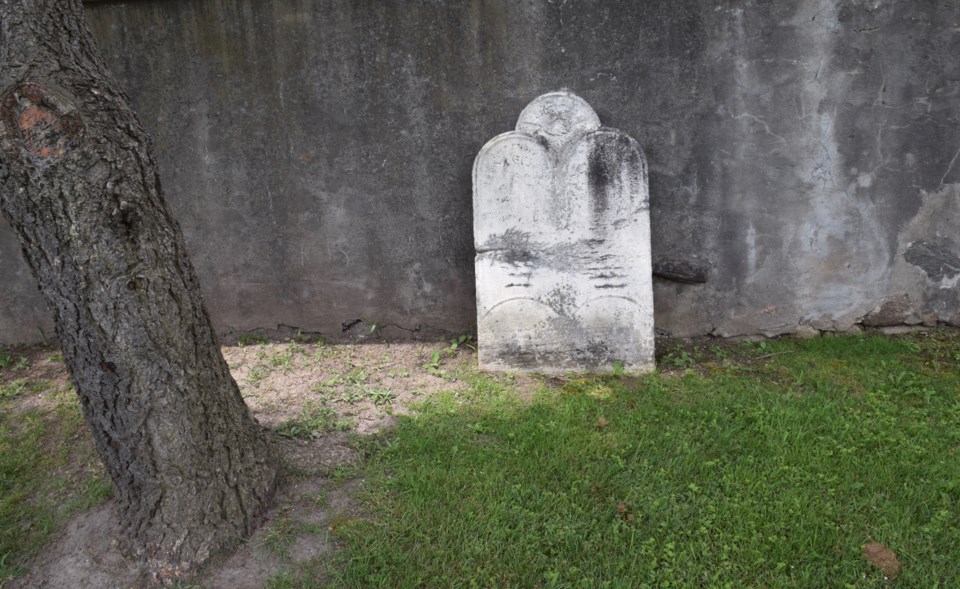BONNYVILLE – What is the difference between a marked and unmarked grave?
Lise Langridge, a resident of Fort Kent, says this question often comes down to the progression of time and poor record keeping – an issue she sees in cemeteries and homestead burial sites within the Municipal District of Bonnyville.
At the end of March, Langridge presented her findings and concerns related to her extensive research of cemeteries and unmarked gravesites within the region to the MD council.
Langridge explained that many years ago she began noticing issues when it came to the maintenance and record keeping of local cemeteries, especially following the closure of adjacent parishes.
As churches are closed and congregations become amalgamated, some of these properties are being sold off, who then is responsible for the cemeteries and keeping those records, she questioned.
Langridge says that she would like to see the municipality take over this caretaking role so that information of both marked and unmarked graves are not lost over time.
“Many municipalities and towns are taking over the cemeteries and I think that's what needs to happen here,” said Langridge, using the Town of Elk Point as an example.
Conversations around unmarked graves have come to the forefront, she noted, emphasizing how important it is to keep records of those laid to rest.
“Over time the headstones cannot be read. A lot of them are in Ukrainian or Russian. There is nobody left to interpret that,” she said. “So then pretty soon you don't have a record of who's there... it has been a lot of work and I have devoted 10 years of my life to it.”
When landmarks, such as fences, roads or other structures, are moved it can be difficult to locate gravesites that were not marked with headstones whether inside cemeteries or at burial plots made by homesteaders over the last two hundred years.
To identify the burial spots and cemeteries within the municipality, Langridge has relied on provincial archives, other records and oral storytelling to assist in locating where an individual has been buried.
“It's not an easy task. Many people have passed on, the knowledge is being lost,” she said.
“I can tell you which cemetery someone is buried in, but not where in the cemetery they are,” she said, explaining the ongoing limitations of her research.
Her concern is that without proper documentation and record keeping both historical and non-historical graves and cemeteries could be impacted by future development – or worse, be forgotten completely.
Langridge has been using provincial death records accessible from the Government of Alberta to help find the location of people's relatives. However, the government only provides the records of those who have died prior to 1970 due to privacy laws.
“Once I learned how to navigate that, then I started putting things in binders. I did every cemetery that I know of within the MD,” she said.
Through this process Langridge came across a cemetery not included in the MD's records – Dumont Cemetery.
Not accessible by road, east of Bonnyville towards Muriel Lake lies a cemetery not marked on any map. Langridge learned of its location from another resident who had relatives buried there.
Through death records, she was able to confirm several people who had been laid to rest in that cemetery.
“Whose responsibility are the cemeteries... I don't know, but it needs to be added to the MD map and I think we need to relook at all the cemeteries in the MD and properly mark them,” she told councillors.
More than just marking cemeteries, other burial sites that fall within the municipality should be recognized and marked by the MD as well, she noted.
“Iron River became a little bit of a challenge because many of them are buried on the homesteads according to the records. Now, I wouldn't have the information if they were reinterred, but I have my doubts (that they have been),” she said.
Finding all this information has come at a cost as well. Langridge has been paying out of her own pocket to get copies of provincial records – and the cost for this has been rising.
“When you're talking about the mass amount of work I'm doing, it adds up. I got to pick a lot of bottles to pay for that,” she said while trying to keep the mood light.
Ultimately, Langridge wants the municipality to begin taking ownership of these records, as well as archive the research she has already completed on cemeteries in the area so they can be accessed by others.
During the delegation, CAO Al Hoggan indicated that while creating an electronic record of Langridge's findings could be simply done by the MD’s administration, it is up to council to decide what should be done moving forward.
Following her presentation, Langridge told Lakeland This Week that while she would like to see the development of a municipal cemetery, centralizing burial records within the MD is a much-needed start.
“I don't know if they are ready for that, but we need to have a conversation,” she said, highlighting how quickly marked and unmarked graves can be forgotten.
“We need to open conversation because other people might have different ideas.”



